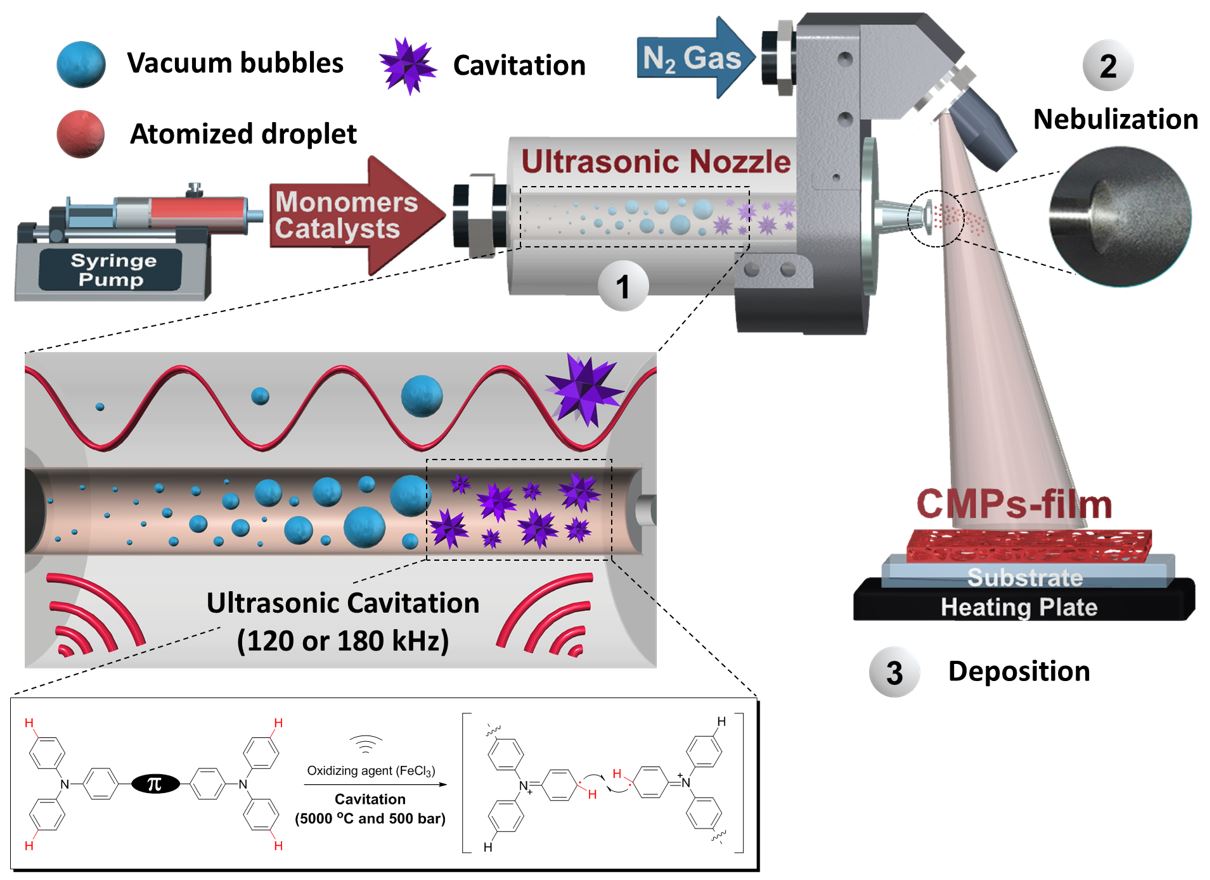|
Conjugated microporous polymers (CMPs) are potentials material for energy storage application owing to their rigid and cross-linked microporous structures. However, it is still challenge to form film-like CMPs and integrate the CMPs into devices for further application because of its poor solubility and processiability issues. Herein, we present a simple and very fast methods to synthesize film-like CMPs by ultrasonic spray chemistry (USC), which allows in-situ polymerization and thin-film fabrication process simultaneously. By using USC, the oxidative coupling of triphenylamine (TPA) based monomers are easily achieved to produce the three different types of CMP-films that have different core unit between TPA group, CMP-TPA, CMP-DTT, and CMP-BT. Compared with standard batch chemistry method of oxidative coupling reaction, USC delivers enhancement of synthetic yield of CMP-films because of releasing of enormous energy by collapsing of vacuum bubble that is formed during cavitation. As the increase of ultrasound frequency from 120 kHz to 180 kHz, the synthetic yield and porosity of CMP-films were also enhanced. We applied CMP-films to supercapacitor owing to their thin-film and microporousity. CMP-BT (180 kHz) exhibited much higher capacitance 250 F/g than 91 F/g for CMP-TPA (180 kHz), and 49 F/g for CMP-DTT (180 kHz) due to its polarized structures. Furthermore, layer-by-layer (LBL) CMP-BT (180 kHz)/single-wall carbon nanotube (SWCNT) electrode was prepared by USC for increasing conductivity and porosity of electrodes. This electrode demonstrated very high specific capacitances (583 F/g), and high cycling stability (95% retention after 20,000 cycles). This result suggested that USC offer a new way for overcoming the present processability issues of microporous materials. |

|
 123rd General Meeting of the KCS
123rd General Meeting of the KCS
 123rd General Meeting of the KCS
123rd General Meeting of the KCS